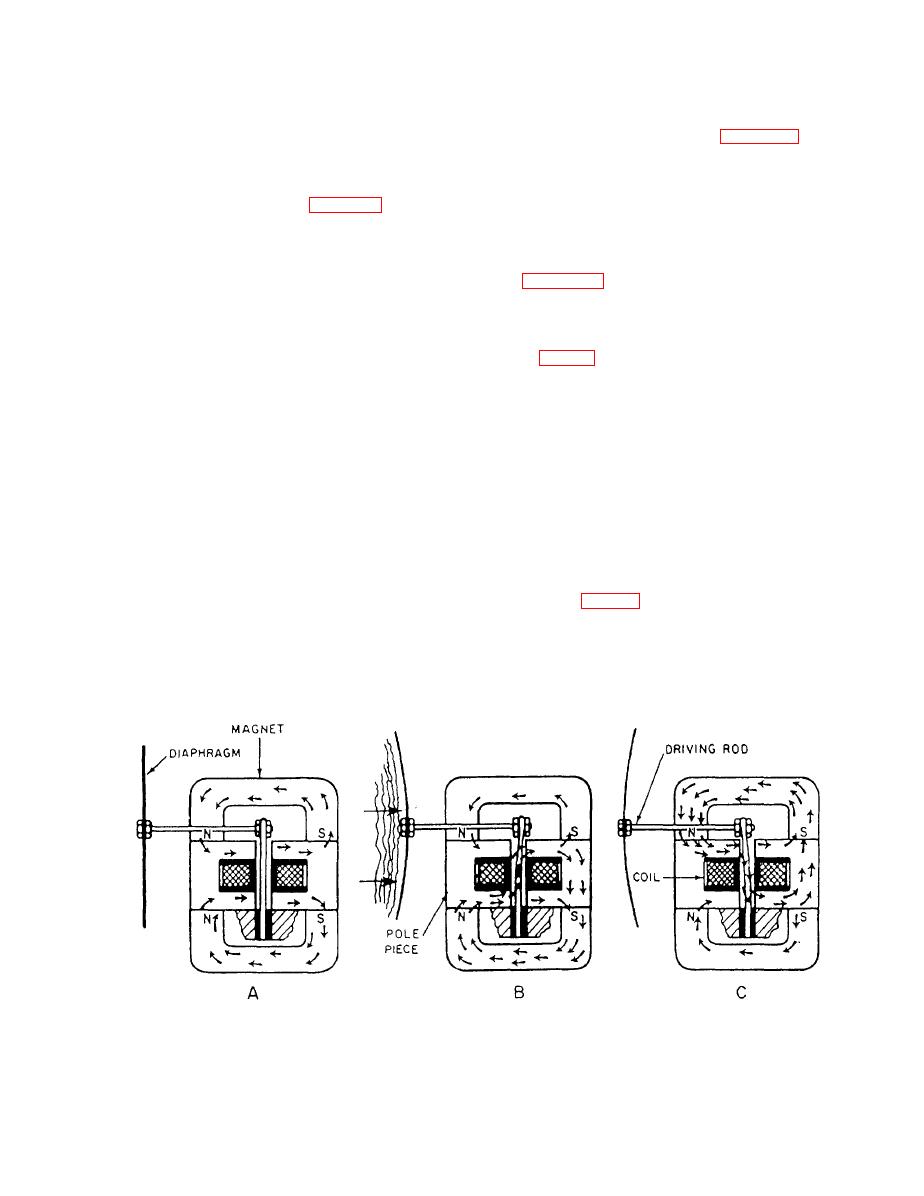 |
|||
|
Page Title:
Figure 5-8.--Sound-powered transmitter receiver unit. |
|
||
| ||||||||||
|
|
 compressions and rarefaction in the atmosphere in
Capacitor C1 is connected in parallel with the
which they travel. In sound-powered telephones, the
sound-powered units for tone compensation. When
sound waves created by a speaker's voice cause the
using the sound-powered handset, switch S1 must be
diaphragm in the transmitter unit to vibrate in unison
depressed for both transmitting and receiving.
with the sound wave vibrations. Figure 5-8, view A,
SOUND-POWERED UNITS.-- The sound-
shows the armature of a transmitter unit when there are
powered transmitter (microphone) and receiver units in
no sound waves striking the diaphragm. Note that the
a sound-powered handset are identical and
armature is centered between the pole pieces with the
interchangeable. As illustrated in figure 5-8, views A, B,
magnetic lines of force passing from the north to the
and C, a unit consists of two permanent magnets, two
south pole and that there are no lines of force passing
pole pieces, an armature, a driving rod, a diaphragm, and
lengthwise through the armature.
a coil. The armature is located between four pole tips,
one pair at each end of the armature. The spacing
striking the diaphragm and causing the diaphragm to
between the pole tips at each end is such that an air space
vibrate. The vibrations are impressed upon the armature
remains after the armature is inserted between them.
by the drive rod. During the compression part of the
This air space has an intense magnetic field, supplied by
wave (fig. 5-8, view B) this action causes the armature
the two magnets that are held in contact with the pole
to bend and reduce the air gap at the upper south pole.
tips.
The reduction of the air gap decreases the reluctance
The armature is clamped rigidly at one end near one
between the upper south pole and the armature, while
of the pairs of poles and is connected to the other end to
increasing the reluctance between the armature and the
the diaphragm by the drive rod. Therefore, any
upper north pole. This action reduces the lines of force
movement of the diaphragm causes the free end of the
that travel between the two upper pole pieces. There is
armature to move toward one of the pole pieces. The
no large change in the reluctance at the lower poles;
armature passes through the exact center of a coil of wire
however, the armature has less reluctance than the lower
that is placed between the pole pieces in the magnetic
air gap and a large number of magnetic lines of force
field.
will follow the armature to the upper south pole.
When the sound wave rarefaction reaches the
Principles of Operation of the Transmitter
diaphragm (fig. 5-8, view C), it recoils, causing the
Unit.-- Sound waves are vibrations that cause
5-10
|
|
Privacy Statement - Press Release - Copyright Information. - Contact Us |